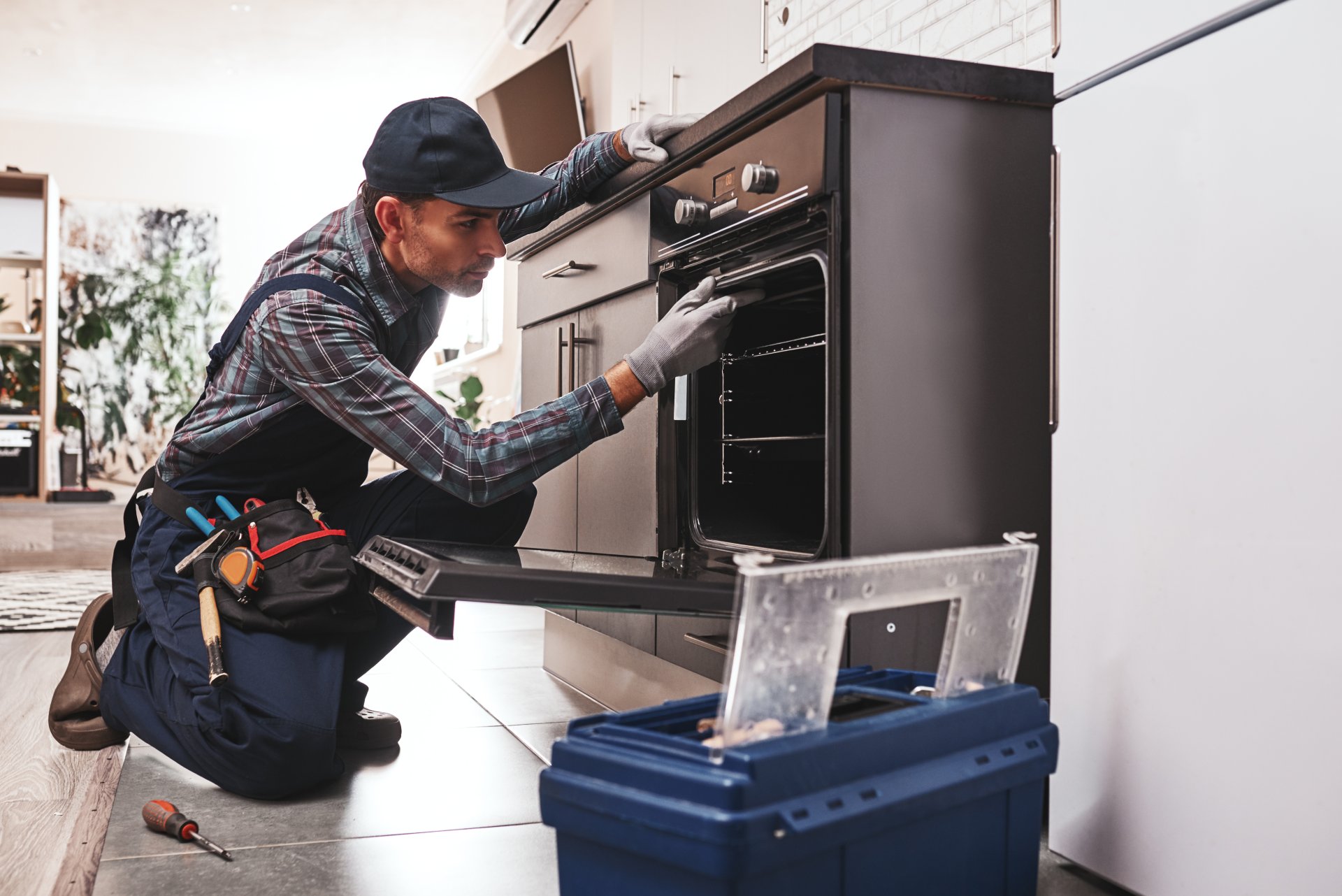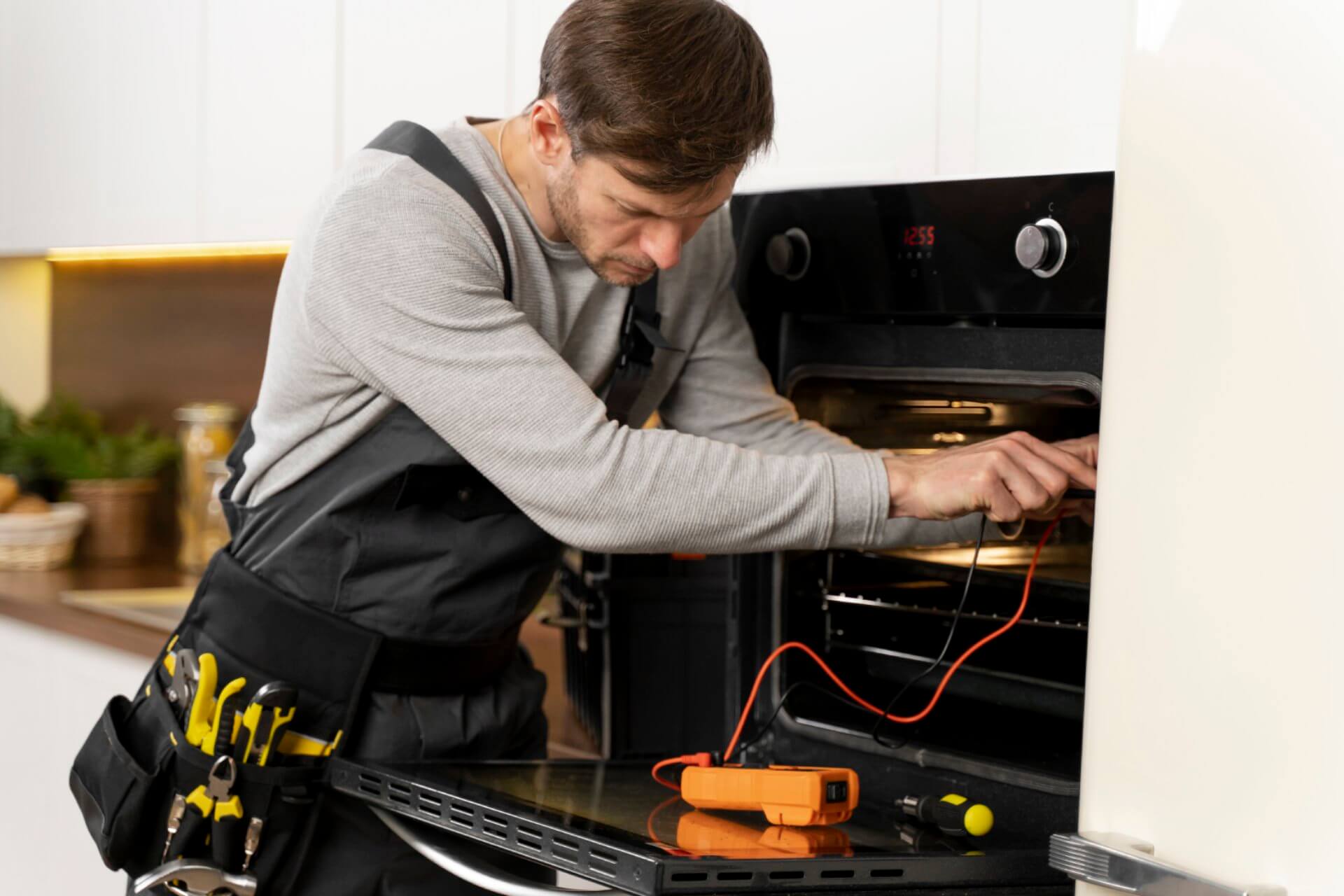Oven Not Heating on Fan Setting? 5 DIY Tests That Work | Australian Guide
Picture this - you've got a roast dinner planned, the family's coming over, and you've just popped the chook in the oven. But an hour later, you open the door to find it's barely cooked. Your oven's fan is whirring away, but there's no heat! When your oven's fan setting isn't heating properly, it's not just annoying - it throws your whole meal plan into chaos and can leave you reaching for the takeaway menus. But here's the thing - you don't always need to call in the pros!
I've helped hundreds of homeowners with this exact problem, and trust me, about 75% of fan-forced oven heating issues can be solved with simple DIY fixes. This guide will walk you through the 5 most effective tests to diagnose what's gone wrong with your fan-forced oven and show you exactly how to get it heating properly again.

Common Reasons Your Fan-Forced Oven Isn't Heating
Before diving into solutions, it helps to understand what might be causing the problem. When your oven's fan setting isn't heating effectively, it's typically due to one of these issues:
- Element failures — The circular element behind the fan is the most common culprit
- Fan motor problems
- Temperature sensor malfunctions
- Thermostat issues
- Control board failures
The good news? The first three causes account for roughly 80% of all fan oven heating problems and many can be diagnosed with basic DIY skills.
5 Effective DIY Tests for Ovens That Won't Heat on Fan Setting
1. Check If Other Settings Work
Why This Test Helps: This simple first step narrows down whether you're dealing with a fan-specific issue or a general oven problem.
What You Need:
- Oven thermometer (costs about $20-30 at Bunnings or Kmart)
DIY Test:
- Try different oven functions — Do conventional (top and bottom elements) or grill settings work?
- Check if the fan itself is running — Open the door and listen for the fan motor
- Use an oven thermometer to verify heating:
- Place the thermometer in the centre of the oven
- Set conventional mode to 180°C
- Wait 15 minutes and check the temperature
- Compare with fan-forced setting:
- Reset the oven to fan-forced at 180°C
- Wait 15 minutes and check the thermometer again
What Results Mean:
- If other settings heat properly but fan mode doesn't: likely a faulty fan element or fan motor issue
- If no settings heat at all: likely a power supply problem or main control board failure
- If the fan runs but doesn't heat: almost certainly a burnt-out fan element
Pro Tip: Fan-forced ovens should typically run about 20-30°C hotter than the same setting on conventional mode. If your conventional mode works but fan mode doesn't heat at all, that's a dead giveaway that your fan element has failed.

2. Inspect the Fan Element
The circular element surrounding the fan is the most common failure point in fan-forced ovens, responsible for approximately 70% of fan mode heating failures.
Safety Warning: Always disconnect power to the oven before removing panels or inspecting internal components. All electrical work in Australia must comply with AS/NZS 3000 standards. If you're not confident working with electrical appliances, this is where professional help is warranted.
What You Need:
- Screwdriver set
- Torch
- Multimeter (if you have one)
DIY Test:
- Turn off power — Switch off the oven at the circuit breaker or unplug it
- Access the element:
- Remove the rear panel of the oven (typically held by several screws)
- Locate the circular element surrounding the fan
- Visual inspection:
- Look for visible damage such as blisters, breaks, or burnt spots
- Check for discoloration or signs of overheating
- Continuity test (if you have a multimeter):
- Set your multimeter to the continuity or resistance setting
- Disconnect the element wires if possible
- Touch the probes to each terminal of the element
- A reading showing continuity (near 0 Ohms) means the element is intact
- No continuity (infinite resistance) indicates a broken element
What Results Mean:
- Visible damage or no continuity: The element needs replacement
- No visible issues and good continuity: Problem likely lies elsewhere
Replacement Tip: Fan elements typically cost $70-150 depending on your oven model. Replacement is straightforward for most DIYers comfortable with basic tools, involving disconnecting the old element's wires and installing the new one.

3. Check the Temperature Sensor
The temperature sensor tells your oven's control system how hot the cavity is. When it fails, your oven can't regulate temperature properly.
What You Need:
- Screwdriver set
- Multimeter (optional but helpful)
DIY Test:
- Locate the temperature sensor:
- It typically looks like a thin metal probe inside the oven cavity
- Often located at the rear or top of the oven compartment
- Visual inspection:
- Check for damage to the sensor probe
- Ensure it's properly secured and not touching the oven wall
- Resistance test (if you have a multimeter):
- Disconnect power to the oven
- Access the sensor wiring (may require removing the rear panel)
- Disconnect the sensor wires
- Measure resistance across the sensor terminals
- The resistance should change as the sensor temperature changes
- At room temperature (20°C), most sensors read between 1,000-1,100 Ohms
What Results Mean:
- If resistance is zero or infinite: Sensor has failed and needs replacement
- If resistance is within range: Sensor is likely working properly
- If sensor is visibly damaged: Replacement is needed
Australian Standards Note: Replacement temperature sensors must be compatible with your specific oven model to ensure accurate temperature regulation. This is crucial for both food safety and appliance safety as required by Australian safety standards.

4. Test the Fan Motor
If the fan isn't turning, hot air can't circulate properly in your oven.
What You Need:
- Screwdriver set
- Torch
DIY Test:
- Listen test:
- Turn on the fan-forced setting
- Listen for the fan motor running
- Visual inspection:
- With power disconnected, remove the rear panel
- Check if the fan blades are obstructed or damaged
- Look for signs of burn marks around the motor
- Manual rotation test:
- With power off, try rotating the fan blade by hand
- It should turn freely without resistance or scraping
- Motor connections check:
- Ensure all wires to the motor are properly connected
- Look for damaged wiring or burnt connectors
What Results Mean:
- Fan doesn't turn but motor hums: Likely a seized motor bearing
- No sound at all: Possible electrical connection issue or failed motor
- Fan turns by hand but not when powered: Typically indicates a failed motor
- Visible damage: Motor needs replacement
Parts Tip: Fan motors typically cost $100-200 in Australia. Replace like-for-like to ensure proper fit and function. Always match the voltage and rotation direction of the original motor.

5. Examine the Thermostat and Controls
Problems with the thermostat or control board can prevent proper heating in any oven mode.
What You Need:
- Screwdriver set
- Multimeter (for advanced testing)
DIY Test:
- Control panel check:
- Do buttons/knobs respond normally?
- Are there any error codes displayed?
- Try resetting the oven by turning off power for 5 minutes
- Thermostat test:
- Set the oven to conventional mode at various temperatures
- Use an oven thermometer to verify if actual temperature matches the setting
- Large discrepancies suggest thermostat problems
- Basic wiring check:
- With power disconnected, check for loose connections
- Look for burnt or damaged wires, especially near the fan element
What Results Mean:
- Unresponsive controls: Possible control board failure
- Large temperature differences: Likely a thermostat issue
- Intermittent heating: Often indicates a loose connection or relay problem
Tech Tip: Modern digital ovens can sometimes be reset by disconnecting power for 5 minutes. This simple step resolves about 15% of electronic control issues without any parts or complex repairs.

Prevention: Keep Your Fan Oven Working Efficiently
The best way to deal with oven problems is to prevent them in the first place:
- Regular cleaning — Food debris can damage elements and affect air circulation
- Avoid excessive temperatures — Regularly setting your oven above 230°C can shorten element life
- Keep vents clear — Ensure nothing blocks the oven's external vents
- Use appropriate cookware — Heavy items can damage the lower element or oven floor
- Preheat properly — Allow the oven to reach temperature before cooking
When to Call a Professional
While these DIY tests can help diagnose many fan oven problems, there are times when professional help is warranted:
- You've found a fault you're not comfortable repairing yourself
- The issue involves complex electronic components
- You're experiencing electrical issues (tripping breakers, sparking)
- Your oven is under warranty
- Australian regulations require licensed technicians for certain repairs
Safety First: According to Energy Safe Victoria and similar authorities across Australia, any repairs involving direct wiring should be performed by a licensed electrician or certified appliance technician.
Conclusion
A fan-forced oven that won't heat properly is certainly frustrating, but as you can see, diagnosing the problem is often simpler than you might expect. In my experience, about 70% of fan heating issues are caused by a faulty circular element - a relatively inexpensive and straightforward fix for many DIYers.
Taking the time to run these simple tests before calling a technician can save you a fortune in unnecessary service calls, and you might just find yourself with the satisfaction of fixing it yourself. Your oven is designed to last 10-15 years with proper care - don't let a minor heating element issue force you into a premature replacement!

Frequently Asked Questions (FAQs)
How hot should a fan-forced oven get? Most fan-forced ovens can reach temperatures of 230-250°C, though standard cooking typically happens between 160-220°C. Fan mode should heat up 20-30% faster than conventional mode.
Why does my fan oven heat unevenly? Uneven heating in fan mode is typically caused by a partially failed element, obstructed fan blade, or improper shelf position. Using the middle rack position typically provides the most even cooking results.
Is it cheaper to fix or replace an oven with fan heating problems in Australia? For ovens less than 8 years old, repairs are typically more economical. Fan element replacement usually costs $200-400 including parts and labour – significantly less than the $1,000-3,000 for a new oven. Check if repairs are covered under Australian Consumer Law warranty protection.
Can I still use my oven if only the fan mode doesn't work? Yes! Most ovens with fan problems can still be used in conventional or grill mode. You'll need to adjust cooking times and temperatures (typically increase temperature by 20°C and extend cooking time by 15-20%).
How long do fan elements typically last? With normal household use, fan elements typically last 5-8 years. Heavy users (daily baking or multiple meals) might see shorter lifespans of 3-5 years. Regular cleaning can extend element life by preventing food debris buildup.
Is it dangerous to use an oven with heating problems? Ovens with inconsistent heating primarily present food safety concerns rather than immediate hazards. According to Food Standards Australia New Zealand, food must reach safe minimum internal temperatures to prevent foodborne illness. If your oven can't maintain consistent temperatures, consider using a meat thermometer to verify food is properly cooked.

About Julian
Home appliance enthusiast and DIY repair specialist with a passion for helping others save money on appliance maintenance.
Related Articles

Home Warranty for Appliances in Australia: Complete Guide 2025

Energy Rating Labels Australia: Save $500+ Yearly on Appliance Bills | Complete Guide

